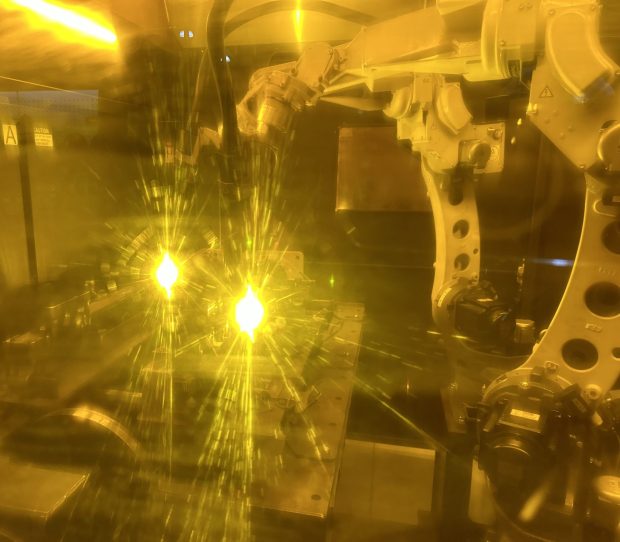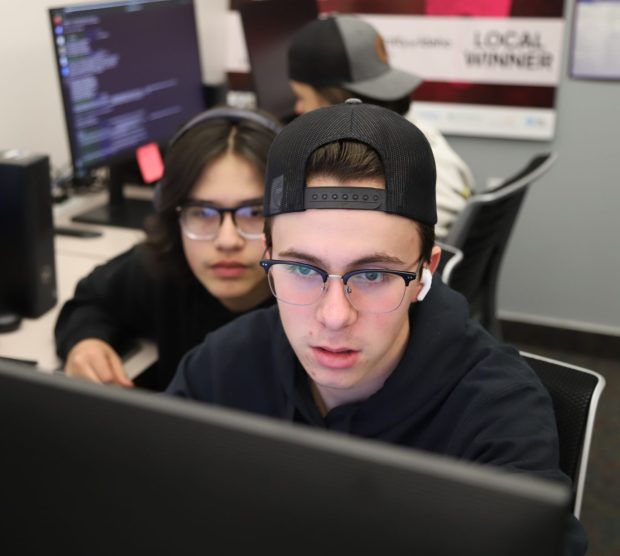
This story is part of a series on Idaho’s new investments in career technical education (CTE) programs. Reporter Darren Svan traveled the state to investigate how businesses and high schools are partnering to train teenagers to fill their in-demand jobs. This months-long series was supported on a grant from the Education Writers Association.
Working professionals are taking time away from their jobs to teach teenagers their trades. Teenagers are thriving in these hands-on learning experiences.
Both sides are winning.
Firefighters, corporate leaders, biologists, business owners, skilled tradespeople, farmers and computer engineers are walking into high schools to share their expertise and ensure the legacy of their professions.
These partnerships serve dual purposes: Industry trains a new generation of employees and students acquire skills for in-demand careers. It’s a must-have relationship for career technical programs to be successful.
One business leader said, “The idea is that we have a one-stop shop for all the talented kids that we can get in the Magic Valley,” one of Idaho’s top manufacturing and agricultural regions. The region boasts two CTE centers and 152 programs scattered throughout area high schools, the most popular being business, marketing, agriculture, food and natural resources. There are 17,000 students enrolled in the region.

For each approved CTE pathway, schools must maintain a technical advisory committee (TAC), connecting programs to industry partners. Committee members bring guest speakers, host field trips to industry sites, provide curriculum input, suggest the best equipment and technology to purchase, provide mentoring, and offer internships and apprenticeships.
“They want to bring students into their facilities and train them as technicians and send them to their manufacturer’s schools, whether that’s GM, Dodge or Ford. They’re looking at getting these young people into the trades, right out of high school so they don’t lose them,” said Chad Crosby, an auto mechanics teacher at the the DeAtley Career Technical Education Center in Lewiston.
And students like Centennial High School senior Dylan Price are benefitting. He’s enrolled in the automotive program at the Meridian technical center, one of four offered by West Ada. And he’s on track to complete two capstones, in collision repair and automotive technology. He was recently selected as a Kendall Ford apprentice.
More interested in cars than academics, Price describes himself as “very ADHD.” He enjoys solving problems that have concrete resolutions and he doesn’t like sitting at a desk. His interest in cars started with a 1998 Volkswagen GTI that he bought for $1,700, a purchase his parents didn’t enjoy because of the “rust bucket” sitting in the driveway. Using his Idaho Launch grant, he plans to attend an automotive program at the College of Western Idaho after graduation.
“Eight thousand dollars is a lot of money,” Price said, about the money Gov. Brad Little earmarked for trade or technical schools.
Industry benefits when graduates are prepared
In the Lewiston area, TAC partnerships are aligned with companies like Custom Weld Boats, Idaho Forest Group, Lindsay Creek Vineyards, Rogers Subaru, Life Care Center and My Chef Step. Their involvement helps schools stay on top of industry trends.
“The technology’s just changing so fast, so you have to keep up,” said Crosby, one of 15 full-time teachers at the DeAtley center.
Topping the list of in-demand jobs are skilled trades and healthcare. To meet demand, the center offers pathways in areas like auto mechanics and nursing, each with a three-year pathway culminating with an internship or apprenticeship.
“CTE provides students with a strong foundation of employability skills,” said Kimberly Eimers, director of student services at DeAtley.
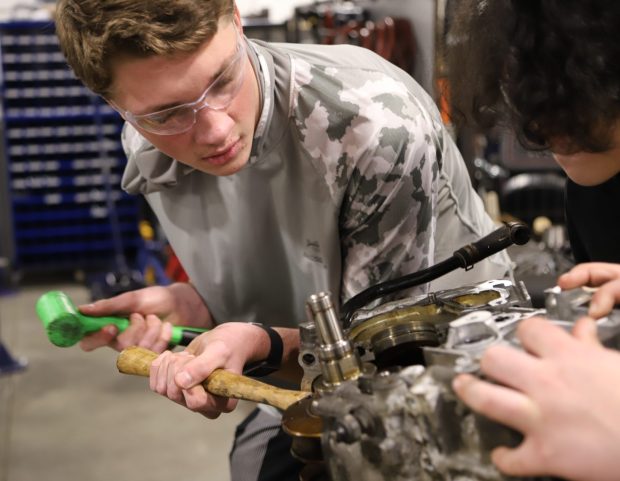
Hiring local students is on the mind of Inventive Group, a company that serves on Mountain Home High School’s TAC. The company designs and manufactures outdoor products and has hired multiple welders right out of high school.
“We want to keep those young people local,” said Debbie Hernandez, the company’s human resource director.
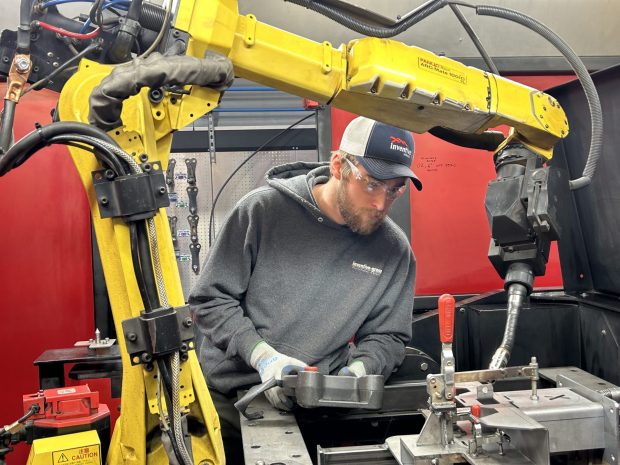
Cultivating local kids who prefer to live and work in rural areas like Gooding, Jerome, Minidoka or Burley is at the forefront of company vice-presidents, too.
Idaho Milk Products (IMP) works closely with Jerome High School and plans to develop partnerships with more schools. Over the summer, IMP hires apprentices, with the goal of bringing them back as journeymen machine operators.
“The goal is that I have a feeder group or a talent pipeline,” said Steven Christiansen, vice president of human resources and organizational development. “They could go into any number of jobs in the plant, many of them are over $20 an hour. “
Industry experts serving on TACs provide much-needed professional development for CTE teachers, because while many have left industry for a career in education, they stay aware of new trends, procedures and emerging technologies, and ensure programs meet local business and industry needs.

“Those technical advisory committees are essential to these programs,” said Rhonda Naftz, Pocatello-Chubbuck School District’s longtime career technical education administrator.
Students at Madison High School in Rexburg work with a mini-hatchery, raising trout and other species in the school’s career technical building. Idaho Fish and Game recently brought rainbow trout eggs for the program to hatch-out in an aquarium that simulates a creek bed in autumn. The eggs will remain there for 20 days while students keep an eye on their growth and later deposit them in appropriate waterways.
“They have been a really big help,” said Jason Bair, an agriculture teacher at Madison.
National security is on the mind of INL
Idaho National Laboratory in Idaho Falls hosts annual summer cyber camps for teenagers to introduce how physical systems are manipulated through the Internet. They offer internships and sponsor cyber challenges like CyberPatriot, a national competition created by the Air Force.
Middle and high school students start with single-board computers called Raspberry Pi.
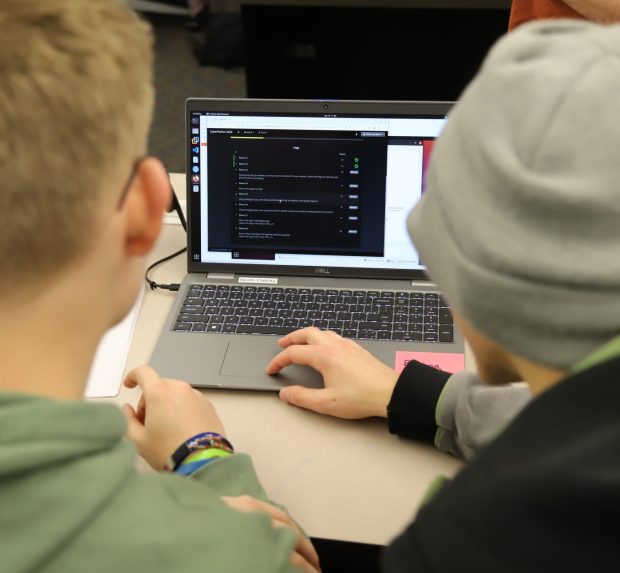
“They learn how to control a circuit board and LED lights remotely. And so that just introduces those cybersecurity skills in very basic form. And then their skills grow and they’re introduced to larger, more intricate control systems,” said Jana Richens, an INL workforce development coordinator for national and homeland security.
“We work with all of the three letter agencies — the Department of Defense and Department of Homeland Security — to protect that critical infrastructure. There is a limited number of students graduating with the skills needed to fill those positions,” Richens explained.
Michael Haney, a University of Idaho assistant professor of computer science, said, “It’s becoming increasingly more important because it has become a matter of life and death.”

The Division of Career and Technical Education reports that cybersecurity job openings in Idaho increased by 160% since 2015. There are currently four high school programs offered in Boise, Idaho Falls, Nampa and Caldwell.
“With the high school kids, they’re not as intimidated as some of the adults are. I see the potential in the future in these kids and they’ve got enthusiasm for it,” said Haney, who serves on DeAtley’s cybersecurity TAC.
A junior at Idaho Falls High School, Isaac Parsons attended INL camps and likes cybersecurity. He enjoys figuring out how companies are hacked and mitigating the damage.
“You get to actually talk to people,” Parsons said. “It’s not just sitting alone in a room with a hoodie on.”
Data analyst Randy Schrader contributed to this report. EdNews photographs by reporter Darren Svan.
